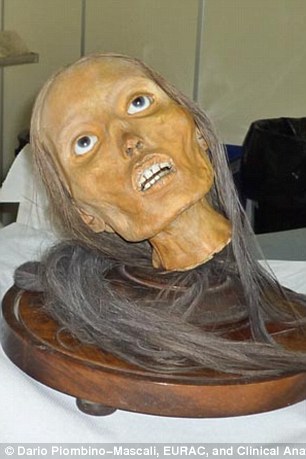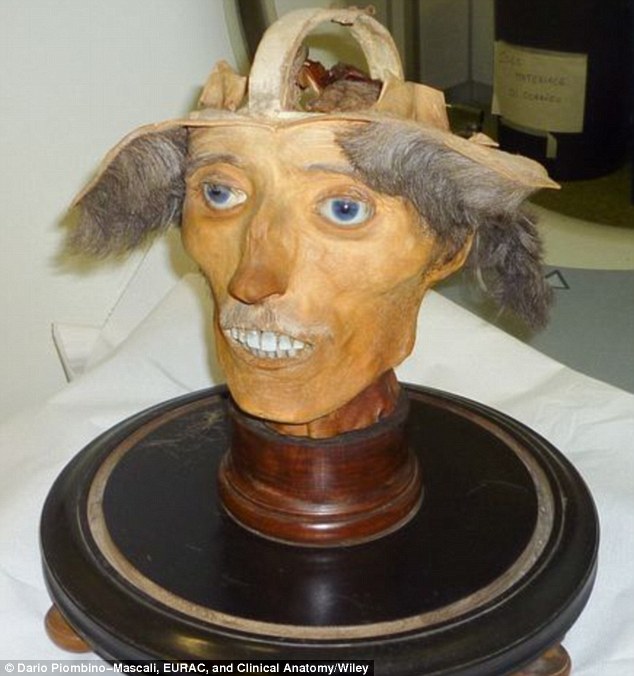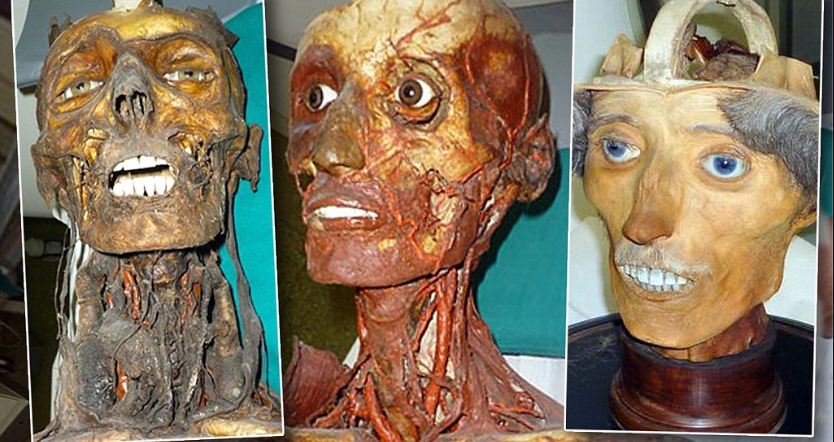These remarkable Italian mummies have been preserved almost perfectly 200 years ago for medical demonstrations.
Giovan Battista Rini stripped away the skin to show the muscles, airways and blood vessels inside the heads.
Academics have now discovered the specimens were injected with arsenic and mercury – or dipped in chemical baths to preserve them for research.

Preserved: This skull had the skin stripped away and has been injected with chemicals to keep it fresh for more than 200 years


Eerie: Two of the sets of remains are believed to be the bodies of outlaws – while the rest are thought to have been donated by patients in a local hospital in Italy for medical research
Although mummification is associated with Ancient Egypt, it was carried out through the centuries for the benefit of researchers and medical students.
The specimens have false hair and teeth and their eye caps have been added artificially. However, they are otherwise remarkably well looked after.
The small collection is kept at the Desenzano Hospital near Verona – and they are the remains of at least five people.
The researchers wrote in the Clinical Anatomy journal that the collection is in ‘an extremely good state of preservation’.
It consists of five heads with necks, two torsos and one heart.

Scanner: CT scans and X-rays were carried out on the remains by the researchers to ascertain how they were preserved

Mummified remains: The practice is normally associated with Ancient Egypt but has been carried out for the benefit of medical demonstrations. This skull is believed to date from the early 19th century
Two of the people who had their bodies frozen in time were outlaws while the others are thought to have been donated by local hospitals.
The researchers carried out CT scans and x-rays on the specimens to see how they were preserved and discovered techniques broadly conformed with those used at the time.
The remains were submerged in chemical baths before being injected with mercury and other chemicals, the National Geographic magazine reported.

Study: Researchers have now discovered the specimens were injected with arsenic and mercury – or dipped in chemical baths to preserve them for demonstrations

In the 19th century arsenic, lime, silicon dioxide and sulphur were commonly used to preserve bodies.
The exact method and substances used by Giovan Battista Rini are unknown, but the authors believe he used arsenic and mercury among other chemicals.
Although it is not known exactly when the mummifications were carried out, it was in the first half of the 19th century as Giovan Battista Rini lived from 1795 to 1856.
They found that the surfaces of all of the mummified remains were particularly thick because of the chemicals used.





